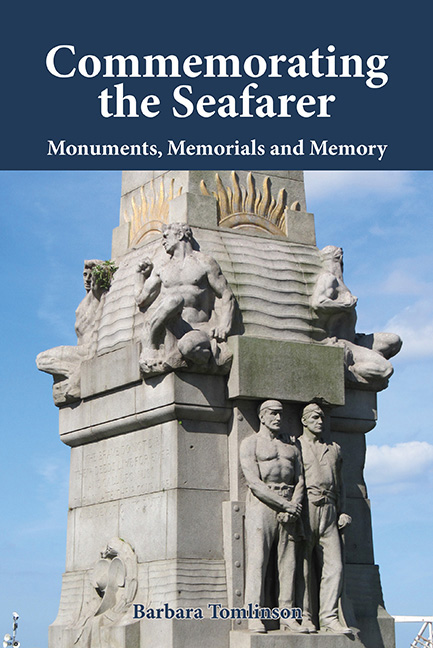Book contents
- Frontmatter
- Dedication
- Contents
- Illustrations
- Preface
- Acknowledgements
- Introduction
- 1 Shifting Loyalties: Naval Memorials, 1628–783
- 2 The Age of Heroes: Naval Memorials, 1783–815
- 3 Pax Britannica: Naval Memorials, 1815–914
- 4 Stormy Weather: Conflict and Sacrifice in the Twentieth Century
- 5 Commerce and Philanthropy: Mercantile Commemoration
- 6 Lost at Sea: Maritime Accidents
- 7 Maritime Explorers: Drake to Shackleton
- 8 Inshore: Fishermen, Lifesavers and Leisure
- Conclusion
- Bibliography
- Index
1 - Shifting Loyalties: Naval Memorials, 1628–783
Published online by Cambridge University Press: 08 May 2021
- Frontmatter
- Dedication
- Contents
- Illustrations
- Preface
- Acknowledgements
- Introduction
- 1 Shifting Loyalties: Naval Memorials, 1628–783
- 2 The Age of Heroes: Naval Memorials, 1783–815
- 3 Pax Britannica: Naval Memorials, 1815–914
- 4 Stormy Weather: Conflict and Sacrifice in the Twentieth Century
- 5 Commerce and Philanthropy: Mercantile Commemoration
- 6 Lost at Sea: Maritime Accidents
- 7 Maritime Explorers: Drake to Shackleton
- 8 Inshore: Fishermen, Lifesavers and Leisure
- Conclusion
- Bibliography
- Index
Summary
To the north side of Henry VII's chapel, in Westminster Abbey, stands the massive tomb of George Villiers, first Duke of Buckingham (1592–1628). In grandeur emulating the royal tombs of the previous century, it is partly the work of the court sculptor Hubert Le Sueur (c.1580–1658). The design of the monument does something new in Britain, by using classical symbolism to evoke Villiers's roles as a naval as well as a military commander (fig. 3). The effigies of the Duke and his duchess, Katherine, are surrounded by four obelisks originally decorated with anchors, palm branches and masks. At their feet sit the mourning figures of Mars, shown as a helmeted warrior, and Neptune as an old man weeping into his beard. Over the next two centuries, Neptune would represent a widely recognized personification of naval power. In contrast with conventionally stiff portraits of the Villiers family (the work of Isaac Besnier), the five allegorical figures on the tomb representing the Duke's accomplishments and achievements are in a freer Italianate style.
The courtier
The position of the tomb presents Buckingham as a surrogate member of the royal family. The effigies lie parallel to those of Henry VII and his queen, and the monument balances the tomb of James I's cousin, Ludovic Stuart, second Duke of Lennox and Duke of Richmond, on the south side of the chapel, also by Le Sueur. James I himself, who has no visible tomb, lies in the vault between them.
In common with other contemporary memorials to noblemen, Buckingham is shown as the founder of a dynasty. His four children, three living and one who died before the monument was commissioned, kneel in a niche above their parents. His descendants continued to be buried in a family vault in this hitherto exclusively royal chapel.
A courtier who owed his initial rapid rise to his physical attractions, Villiers was a favourite of James I who appointed him Lord Admiral in 1618. In this role he was actively concerned with the problems of developing the sort of navy demanded by contemporary warfare and foreign threats to trade.
- Type
- Chapter
- Information
- Commemorating the SeafarerMonuments, Memorials and Memory, pp. 7 - 35Publisher: Boydell & BrewerPrint publication year: 2015



